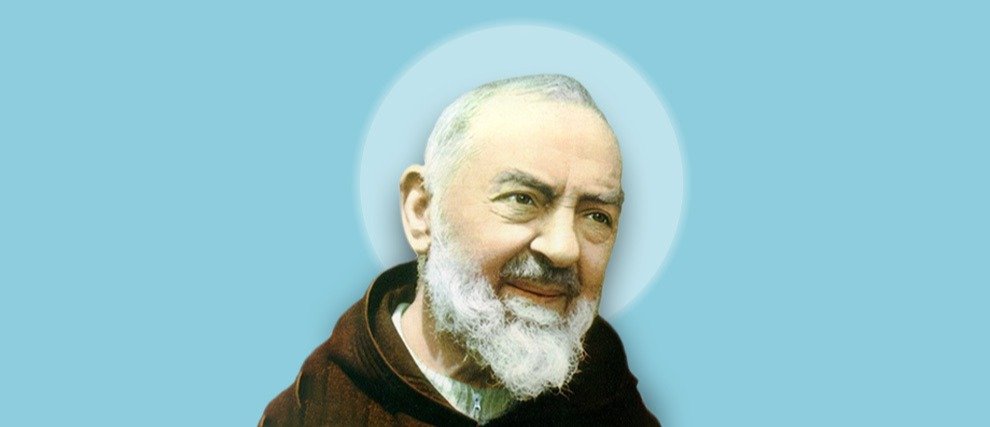How does Meditation Fit into the Christian Spiritual Tradition?
These days, we hear a lot about meditation. However, it is sometimes difficult to know what is covered by this term, which can be part of different approaches (mindfulness meditation, eastern meditation, Christian meditation, etc.) and practices (therapeutic, philosophical, spiritual, etc.).
Within the Christian tradition, the very term meditation, the etymology of which is complex, can be used in different contexts and be integrated in different forms into prayer: spiritual reflection around a point of faith, internalization of the Word of God, manducation, silent prayer, a contemplative attitude...
The search for the inner world and an intimate relationship with God has been present since the early days of Christianity. It was enriched over the centuries, from the Desert Fathers to Saint Ignatius of Loyola or Saint Teresa of Avila, taking different forms (lectio divina, adoration, prayer of meditation, spiritual exercises...). However, it has the same objective: to experience a heart to heart with God present in us.
"Late I loved You, Beauty old and so new; late I loved You. You were inside me and I was outside, and that's where I looked for You. (...) You were with me and I was not with You. " (Saint Augustine of Hippo)
Find out more about Christian meditation as well as some tips for practicing it.
What is Christian Meditation?
An intimate relationship with God
Saint John of the Cross said: “The center of the soul is God.” To meditate is therefore to enter into a relationship with God by entering into ourselves.
Christian meditation and contemporary (non-religious) meditation are quite similar in form:
- in particular, through the invitation to be silent inside oneself,
- by paying attention to what's going on within us so as not to be overwhelmed by our thoughts (calming our thoughts),
- by simply seeking to be in the present moment...
However, they differ in terms of purpose. The main objective of contemporary meditation is to calm and relax the mind and body. In Christian meditation, if a well-being and a calming can also be felt, they are only a consequence and not the final goal, which remains to find God in oneself and to be with Him.
Christian meditation invites us to an authentic, intimate, and profound relationship with the Lord. Like any real encounter, it transforms us. It allows the two-way movement necessary for any relationship: from me to God and from God to me.
It is therefore above all a love story. We accept to be looked at with love by God and then learn to look at ourselves and the world with love.
A practice that goes back to the origins of Christianity
In the gospel of Matthew, chapter 6, Jesus tells us: “But when you pray, go into your room, close the door and pray to your Father, who is unseen. Then your Father, who sees what is done in secret, will reward you.”
Jesus teaches us: to pray is not a matter of rule, of dogma, it is a simple and authentic heart-to-heart with our Father, who knows us, loves us and simply wants us to let ourselves be loved by Him.
From there, different practices have been developed over the centuries to allow this spiritual growth and the search for this peace in God. They can rely on the Word of God - such as lectio divina or the manducation practiced by the Desert Fathers (repetition of a verse) - to let it penetrate us and work in us, or be more "free" in the manner of the prayer of meditation practiced by Saint Teresa of Avila.
This practice of meditation has therefore evolved through the ages, feeding on the spiritual experiences of great saints and even therapeutic discoveries such as those of Dr. Vittoz, a Christian doctor of the 20th century.
All these practices—using the body (breathing, relaxation, etc.) and/or the mind (imagination, repetition, etc.)—make it possible to cut yourself off from external stimuli, in order to refocus in yourself and thus leave room for your encounter with God.
Some tips for practicing meditation
In concrete terms, how can we meditate? Here are some tips. This is advice, not a set of rules, because like any relationship, it is alive and personal. As there is no one way to share some time with a friend, there is no one way to meditate.
The only condition is to be present and open to the presence of God. If sometimes we can't do it, it’s ok; He will always be there for you.
Make yourself available
God is there, in the secret parts of your heart. He is continually there, and ready to receive us, to welcome us there. It is we who are not there!
To meditate, therefore, is to make ourselves present and available for this inner encounter.
This means:
- Allow time for this practice. Not necessarily a long time, but the more regular the practice—ideally daily—the more fruit it will produce!
- Separate your meditation time from external stimuli. It is good to put yourself in a quiet place, to turn off your phone, and make sure that you will not be disturbed for the next few minutes.
- Refocus on the present moment by, for example, doing a breathing exercise, relaxing, and paying attention to your physical and bodily sensations.
- Calm the flow of your thoughts.
To help us do this, we can, for example, put on some soft or sacred music, observe the flame of a candle, a soothing image...
We can also practice “heart guarding,” taught by the fathers of the desert. It consists in becoming aware of the thoughts that pass through us, and, for those we consider disruptive or distracting, in letting them go away. According to John Damascene, "Whether thoughts trouble us or not is one thing that does not depend on us. But whether they remain in us or not, whether they arouse passions or not, is part of what is in our power."
Leaning on God’s word
Jean Cassien, a Christian monk of the fourth century, proposes to continuously repeat a word to help calm our mind and orient it on a sound element. Here are some words for example:
- Abba, Father, as Jesus himself teaches us.
- Jesus, as did Saint Francis of Assisi
This exercise can help you refocus before entering a time of silence, or be practiced continuously. This is the prayer of the heart.
We can also choose a biblical verse and take the time to let it penetrate us, repeating it, focusing on each word, listening to God tell us...
The lectio divina and the spiritual exercises of Saint Ignatius offer a meditative practice particularly rooted in the word of God.
Seek the relationship first
“In silence, we are given the privilege of hearing his voice: Silences of our eyes. Silences of our ears. Silences of our mouth. Silences of our mind. In the silences of the heart, God will speak.” Mother Teresa
It is important to always remember that in the simplicity of meditation, we seek only to be with God and for God. All the exercises of presence, the elements that help us to refocus, are only means to help us to feel the inner presence of God and, sometimes, they will not be enough.
This is normal and part of a living relationship, it should neither worry nor discourage us. Taking an act of faith (I know that—whatever I feel—God is there in me anyway) and marking our willingness to spend a moment with him (Give him some time, even if I feel that it is more difficult today) are the most important.
4 Types of Meditative Practices in the Christian Tradition
Lectio Divina
This type of Christian meditation is based on the Scriptures. Practicing lectio divina consists of letting oneself be guided by the Word through 4 steps: lectio, slow reading of a text; meditatio, time to internalize the text and to research what it tells us deeply; oratio, time of prayer; and comtemplatio, time to keep one's heart open to the presence of God.
Contemplative Prayer
Corresponding to the "oratio" time of lectio divina, contemplative prayer is a silent form of prayer. It is the same inner movement as in lectio divina, but extended over a longer period of time. To enter into prayer is to enter into the depths of oneself, with the firm conviction that God is there at all times, and the intense desire to come to meet Him, to get as close to Him as possible.
Worship
When we talk about worship, we think in particular of Eucharistic adoration practiced by Catholics and some Anglicans. It is about looking at Christ, present in the wafer and presented to the eyes of the faithful in the monstrance, and letting oneself be looked at by Him. It is about putting ourselves in the presence of Jesus, who looks at us and loves us, and uniting with him as the body of Christ.
Spiritual Exercises of Saint Ignatius of Loyola
Saint Ignatius of Loyola, father of the Jesuits, collected spiritual exercises in a book to accompany the meditator in their practice of prayer and meditation through passages of the Gospel. These exercises aim to unlock a real personal encounter with Jesus, and to feel in oneself how to live God’s plan for us.
On Hozana, find guided meditations and spiritual accompaniment in the practice of meditation!
Even if meditation is a personal and intimate journey, it can be important to let yourself be guided in the early days to feel more comfortable and feel all the beauty. Through different communities, Hozana offers you small online retreats to guide you and help you:
- Through , listen to God with a meditation session each and every day.
- Feel the treasures of your inner world, guided by Ignatius of Loyola, with ,
- Join thousands of others in meditative prayer .

